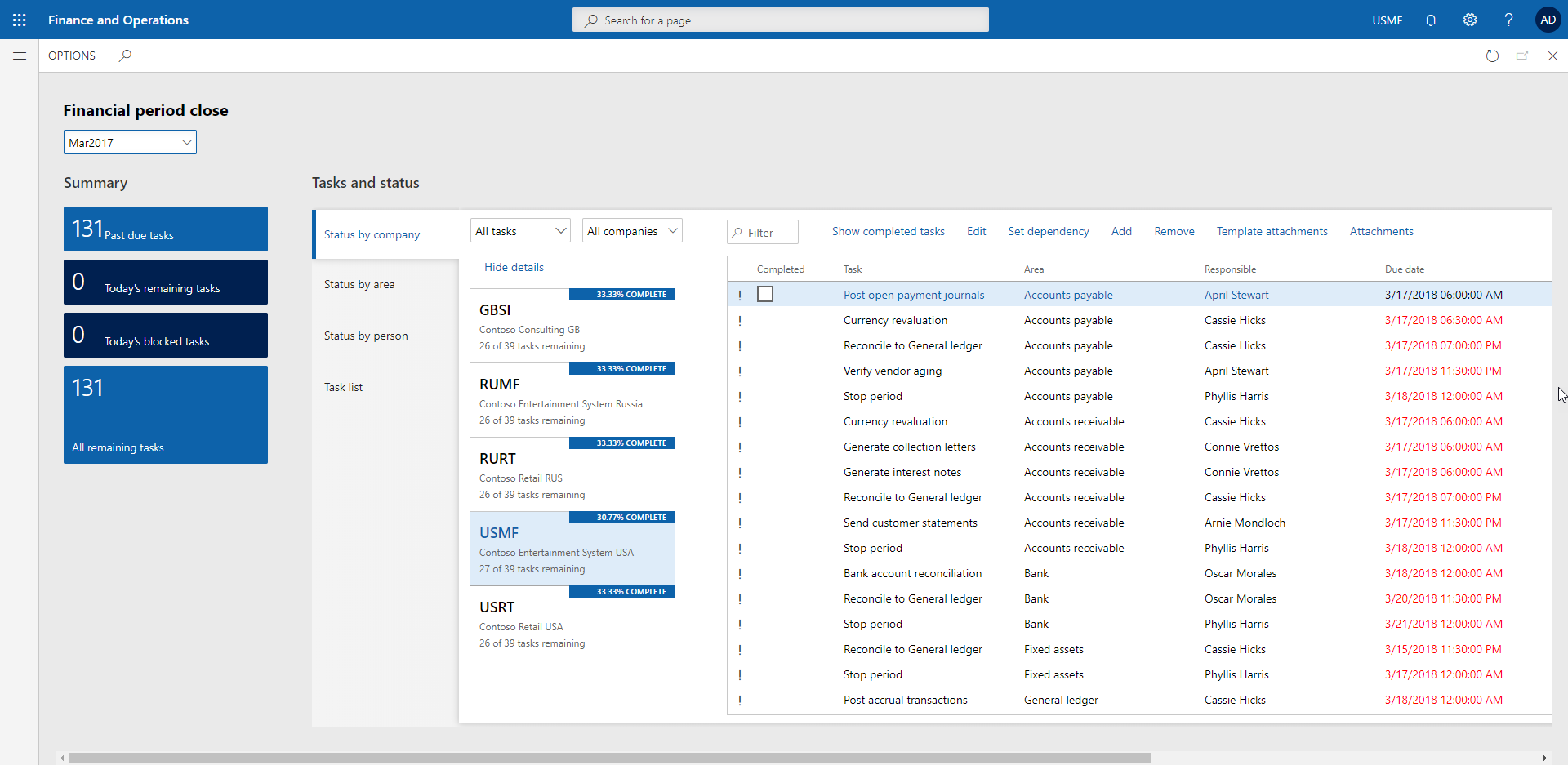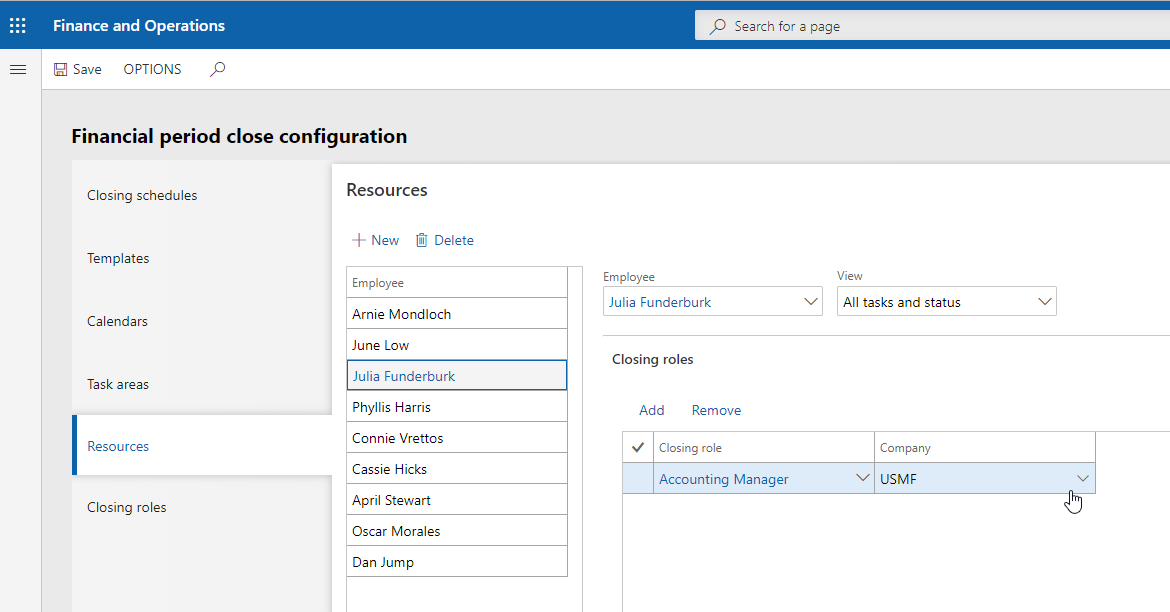Overview
Utilizing the Financial Period Close workspace in Dynamics 365 Finance and Operations requires that you first configure the financial period close in the General Ledger module as shown below:
1 Financial Period Close Workspace

This blog outlines the setup required in the Financial Period Close Configuration. The work is done to enable each close period to work effectively utilizing the task lists and schedule developed in the configuration step.
Walking Through the Financial Period Close Configuration
2 Financial Period Close Configuration
Closing Role
This walkthrough is done as a bottom up approach, beginning at the Closing role option on the list. Here you will identify all the roles that are assigned to users during the closing process. A user may be assigned multiple roles. Keeping them separate may be helpful, as they may be broken out in one legal entity, but handled by the same user in another. Once the list of all necessary “roles” required for the closing process is complete, we move up the list to the Resources option.
Resources
The Resources options provides users the opportunity to match the users to roles. Here you add the employees that will be involved in the closing process and assign them the appropriate closing roles, making certain you have identified the necessary “view” access to see ALL tasks or only ASSIGNED tasks as well as the appropriate company level access for valid legal entity access.
3 Financial Period Close Configuration

Task Area
The next selection on the list is the Task Area. Here, the various classifications of tasks are available for set up. As tasks are created, they are assigned to an area to be better controlled, i.e. Are they residing in accounts payable or fixed assets? This helps break out the tasks and classify them on in the workspace. When creating templates, these tasks are grouped by task area.
Calendars
The calendar section allows users to configure task-scheduling calendars with a start and end date. Below is an example of a five working day calendar.
4 Financial Period Close Configuration
Templates
This is where all the previous set up comes together to format the full plan for the closing configuration. The templates outline each of the tasks that are performed each period, and the day it is due to be completed on, the Closing role is responsible for the task and the dependenciesexists between tasks. Each closing period, these templates generate the tasks for each Resource and populates the Financial Close Workspace with the open tasks.
New templates can be generated in this area when a new task is required in the closing process.
Closing Schedules
Lastly, closing schedules are built to control when the closing process must occur. This allows for control around which templates are used during the closing process, what legal entities are included and what calendar is invoked.
Once this area is configured, each resource named in the Financial Closed Configuration area will begin to see their Financial Close Workspace populate with their assigned tasks during the close process and their work will be readily available to them in a timely fashion. Managers will have direct visibility to the work being completed and the backlog of activities requiring completion. This setup can drive an effective and efficient process to future period close processing in your Dynamics 365 environment.
Want to learn more about Dynamics 365 for Finance and Operations? Visit academy.rsmus.com for eLearning courses and information about our hosted training classes in Denver! You can also contact our Microsoft Dynamics experts at RSM (855) 437-7201.
Sharon Flatley
@saflatley

 RSMUS.com
RSMUS.com